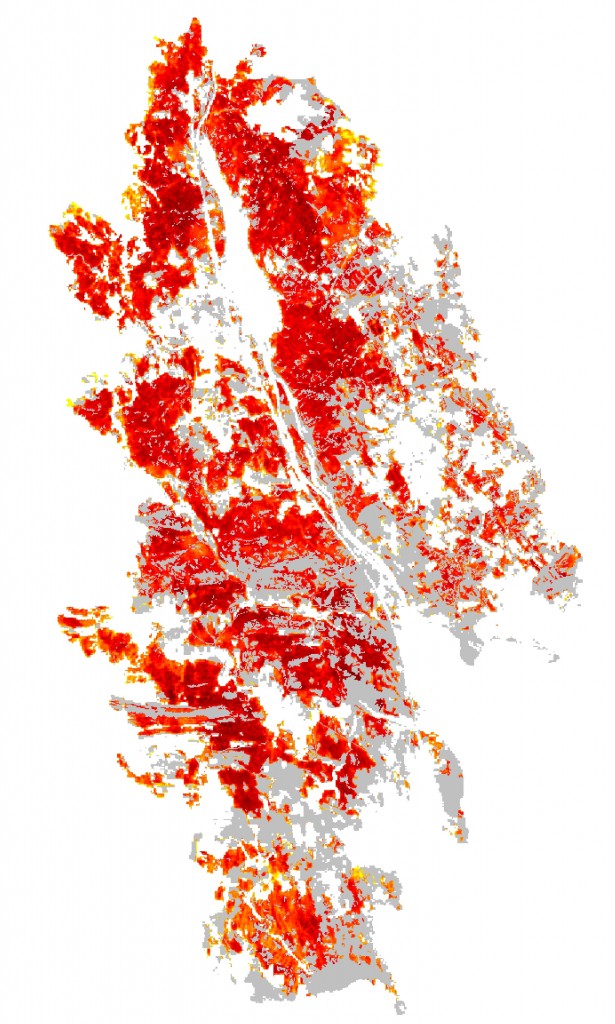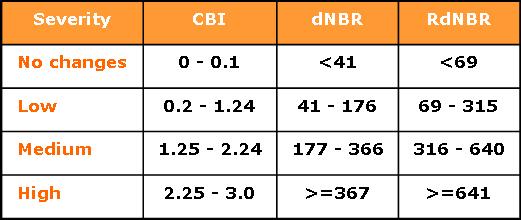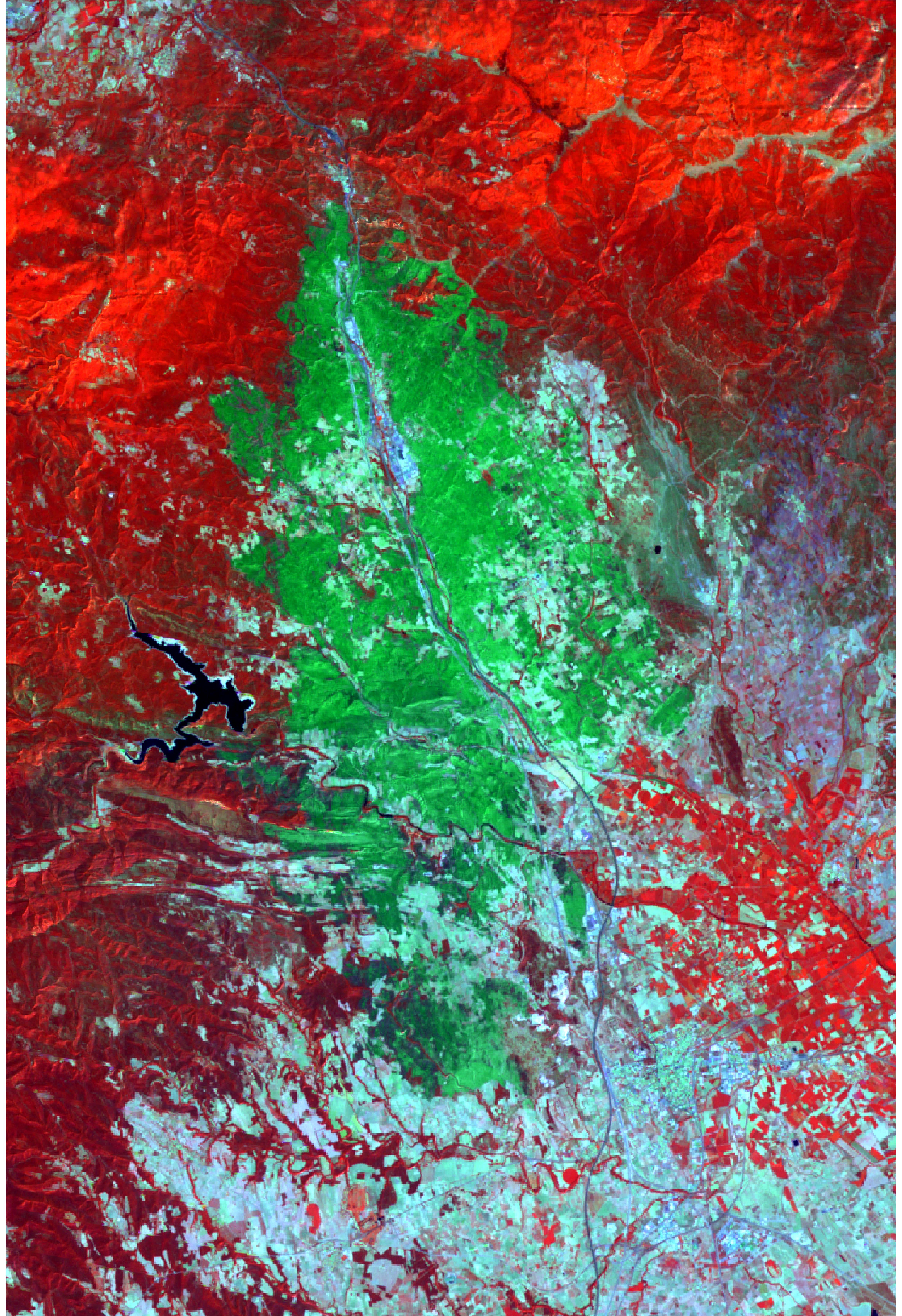1-Collecting historical fire boundaries in Catalonia
Wildfire boundaries in Catalonia have been compiled from 1986 and beyond, from the Departament of Agriculture, Livestock and Marine Environment ( DAMM ) of Catalonia and the Cartographic and Geological Institute of Catalonia ( ICGC ) . The boundaris were obtained from the analysis of Landsat, and they are currently available in the DAMM website.
2-Compilation of satellite scenes and initial processing
Landsat Scenes were selected from SATCAT (Catalan Landsat Imagery server) and Glovis (NASA server). Cloud-free available scenes close in time to each fire were selected: one just before fire date and the other just after. The images from the two servers were already geometrically corrected. The multispectral bands of TM and ETM + coming from SATCAT were served at a 20 m pixel resolution, thus the products generated from this information was also at 20 m pixel resolution. Then the images were radiometrically corrected to reduce unwanted artifacts due to the effects of the atmosphere, the lighting differential caused by time of the day, and the place or the relief of the Earth ( areas more or less illuminated , shadows , etc. ) using the methodology developed in Pons & Solé- Sugrañes (1994) implemented in the Corad tool of MiraMon software.
3-Calculation of NBR ( Normalized Burn Ratio ) index and its derivatives
Following the methodology developed and descrived in MTBS (Monitoring Trends in Burn Severity), the NBR index and derivatives are calculated. The NBR is a standardized index that highlights the spectral response of vegetation affected by fire from the near-infrared (IRP or NIR) and mid-infrared (SWIR or MRI) bands, corresponding to the bands 4 and 7 for the Landsat TM and ETM+, and to the bands 5 and 7 for the Landsat 8 (OIL). This index shows the best contrast between healthy photosynthetic vegetation and burnt vegetation. This index, similarly to NDVI, has values between -1 and 1, but it was multiplied by 1000 in order to better manage the data (integer data type):
NBR = ((IRp – IRm) /(IRp + IRm)) x 1000
The NBR from the closest image in time to the fire date was calculated, and for the closest image after the fire. Since some of the burnt area suffered some management actions after the fire (e.g. removal of wood and dead trees, etc.), using a one year after image (as it is recommended to avoid phenological changes) was discarded. The difference between the NBR values was calculated (dNBR) in order to detect changes on vegetation cover:
dNBR = NBRpre – NBRpost
With the aim to normalize the effects of phenological changes of available images before and after the fire, as well as to normalize the bias effect of the vegetation previous conditions, an index called Relative NBR or RdNBR was also calculated, in which the NBR average value of some control areas outside the fire was used. Control areas have similar stand-species composition to the burnt area. This relative index was described in Miller&Thode (2007). The offset parameter was not included in the original formula and was included by the MTBS, since it had shown to perform better results (Cansler&McKenzie, 2012):
RdNBR = dNBR – dNBRoffset / √|NBRpre/1000|
The RdNBR was calculated for forest and shrubland areas using land cover maps. Other land covers as humanized areas, water bodies, crops, etc. were not considered.
4-Ecological severity thresholds

The value range of NBR index is between -1000 and +1000. The RdNBR usually gets values between -600 and +1500. Values close to zero indicate little change, and values far from zero indicate major changes. Positive values show a loss of photosynthetically active vegetation or vegetation mortality. Negative values correspond to a vegetation increase.
In order to facilitate visual interpretation, NBR and RdNBR values were classified into different severity levels: low, moderate and high. The classification method was based on studies carried in the United States where the relation between these indexes and burnt severity measures from the field (Composite Burnt Index, CBI) were assessed.

Source: Miller&Thode, 2007

